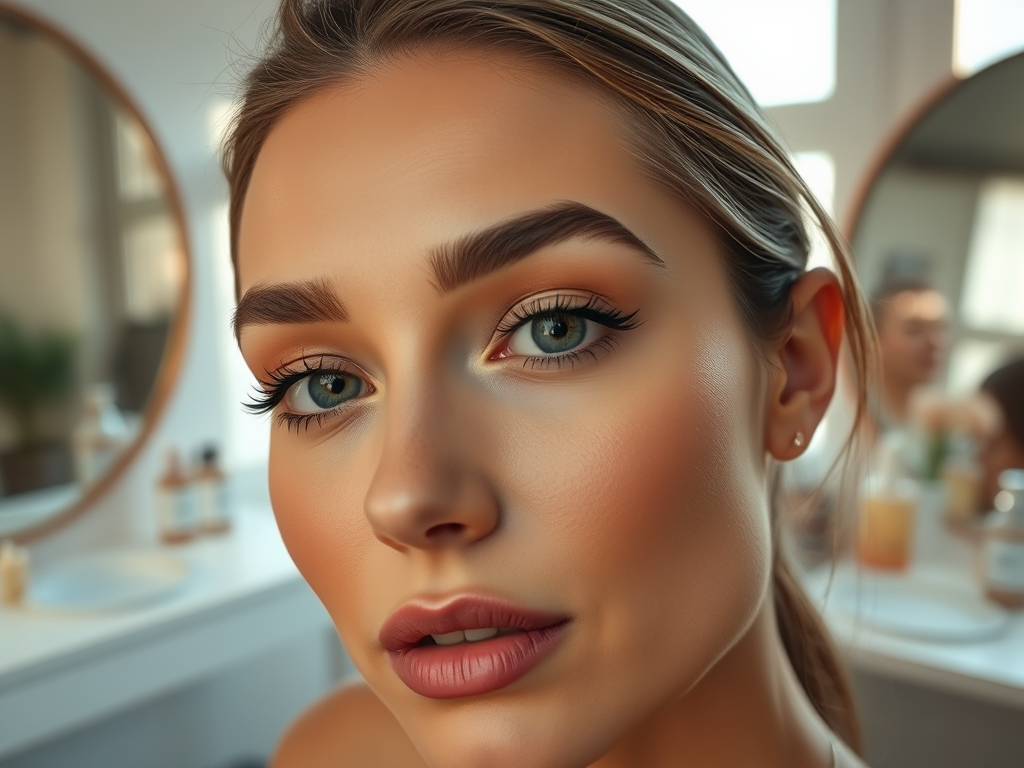Finding the perfect foundation shade can feel like searching for a needle in a haystack. With so many choices on the market, it’s easy to feel overwhelmed and uncertain about which shade is best for you. A customized foundation shade finder can simplify this process, allowing you to discover precisely what works for your unique skin tone and undertone. By understanding the nuances of color matching and experimenting with various shades, you can elevate your makeup game to new heights. This article will explore how to determine your skin tone and undertone while providing you with actionable steps to create your customized shade finder. Let’s begin the journey to achieving a flawless complexion!
Understanding Foundation Shades

The importance of selecting the right foundation shade cannot be overstated. It’s the cornerstone of a great makeup look, enhancing your natural beauty and ensuring a smooth, flawless finish. When your foundation matches well, it can boost your confidence and simplify your overall makeup routine. Conversely, an incorrect shade can lead to a makeup disaster, such as an ashy appearance or a stark contrast with your natural skin tone. Understanding the relationship between foundation shades and your complexion is essential. So, let’s delve further into how color theory plays into finding your perfect match.
To grasp how colors work together, understanding the color wheel is essential. The color wheel illustrates how shades interact, allowing you to identify which foundation colors will work best with your skin tone. For example, complementary colors typically match well and can bring balance to your overall look. When applied correctly, this knowledge can make the process of selecting a foundation shade much more intuitive. Utilizing the principles of color theory will guide you as you navigate the vast array of foundation options.
Identifying Your Skin Tone

Establishing your skin tone is the first step in creating a customized shade finder. Skin tones generally fall into three categories: cool, warm, and neutral. Understanding these categories can help you make educated choices when selecting a foundation. Your skin tone can influence how various colors will look on you, affecting not just foundation but also blush, bronzer, and lipstick choices. It’s crucial to be honest when assessing your skin tone for the best results. There are a few various methods to determine the skin tone effectively.
Several methods exist to determine your skin tone. Consider the following tests to find your perfect match:
- Vein Test: Check the veins on your wrist. If they appear blue, you likely have a cool skin tone; if they look green, you’re probably warm; and if they are a mix of both, you might be neutral.
- White Paper Test: Hold a piece of white paper next to your face. If your skin looks pink or rosy in contrast, you have a cool tone. If it appears more golden or yellow, you’re warm.
- Sun Reaction Test: Consider how your skin reacts to sun exposure. If you burn easily, you likely have a cooler tone, while those who tan easily often have warmer undertones.
Creating Your Shade Finder
After identifying your skin tone, it’s time to create a customized foundation shade finder tailored to your unique needs. This shade finder will serve as your trusted guide when shopping for foundation. Developing this resource not only simplifies future makeup purchases but also enhances your overall beauty routine. A well-made shade finder can save you both time and frustration in the long run, helping you avoid mismatched purchases. There are several essential tools and resources you’ll need to gather before starting this process.
Tools and Resources You’ll Need
Gather essential tools such as foundation samples, swatches, and natural light sources to evaluate your options effectively. Below is a list of tools that can make your search easier:
- Foundation samples from various brands.
- Swatches on clean strips or paper.
- Full-length mirror and a well-lit area for accurate evaluation.
Step-by-Step Guide to Finding Your Perfect Shade
Follow this step-by-step guide to find your perfect foundation shade:
- Start with a clean canvas by washing your face thoroughly.
- Apply several shades along your jawline in small swatches.
- Evaluate under natural lighting and let it settle for a few moments.
- Choose a shade that blends seamlessly with your skin and disappears into your complexion.
| Skin Tone Category | Undertone Description |
|---|---|
| Cool | Often has pink or blue hues |
| Warm | Usually characterized by golden or yellow hues |
| Neutral | Contains a mix of both, offering flexibility in shade selection |
The Importance of Undertones
Understanding undertones plays a crucial role in narrowing down foundation choices. Undertones can make a significant difference in how a foundation appears on your skin compared to how it looks in the bottle. Thus, it is essential to recognize your undertone when selecting a foundation, as a mismatch can lead to an unnatural finish. Even those with a seemingly neutral skin tone will need to pay close attention to these subtle hues. The right undertone compliments your overall skin tone, resulting in a radiant and polished appearance.
Adjusting for Seasonal Changes
Your skin tone and undertone may shift with the seasons due to sun exposure and other environmental factors. Maintaining a consistent makeup look through seasonal changes can sometimes feel difficult. Fortunately, minor adjustments to your foundation shade can offset these changes. As you might tan during the summer or your skin may become paler in winter, it’s important to reevaluate your foundation shades regularly. Let’s discuss how to adapt your foundation shade throughout the year.
To ensure a flawless look regardless of the season, follow these simple steps:
- Reassess your skin tone at the beginning of each season.
- Keep a record of which shades work well throughout the year.
- Experiment with mixing shades for those tricky transitional periods.
Conclusion
Creating a customized foundation shade finder helps to enhance your beauty routine, ensuring that you always look your best. With the right tools and knowledge, you can pinpoint the perfect foundation shade that complements both your skin tone and undertones. Understanding the importance of seasonal adjustments in foundation selection will also keep your look fresh throughout the year. Through this systematic approach, you empower yourself to make educated choices in makeup, eliminating guesswork and the risk of mismatched tones. Ultimately, investing time in finding your perfect foundation shade is an investment in your confidence and self-expression.
Frequently Asked Questions
- What is the difference between skin tone and undertone? Skin tone refers to the surface color of your skin, while undertone refers to the subtle hue beneath that surface, which remains consistent regardless of tanning or skin changes.
- Do I need different foundation shades for different seasons? Yes, many people find that their skin tone and undertone can vary with seasonal changes, necessitating different foundation shades.
- How can I test foundation shades at home? Apply swatches of multiple shades along your jawline in natural light and wait a few minutes to see how they settle.
- Is it essential to match both skin tone and undertone? Yes, matching both ensures a foundation that not only looks great initially but also wears well throughout the day.
- Can I create my own foundation shade if I can’t find a perfect match? Absolutely! You can mix different shades or even different brands to create a customized shade ideal for your complexion.






